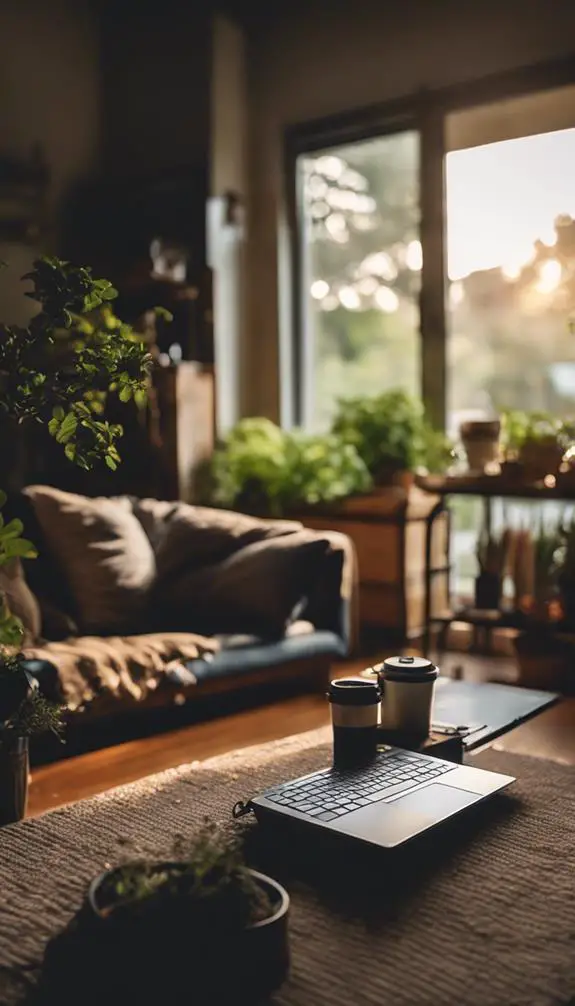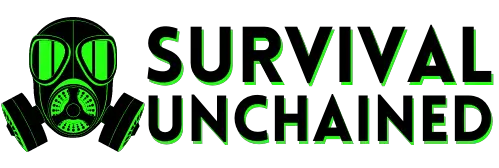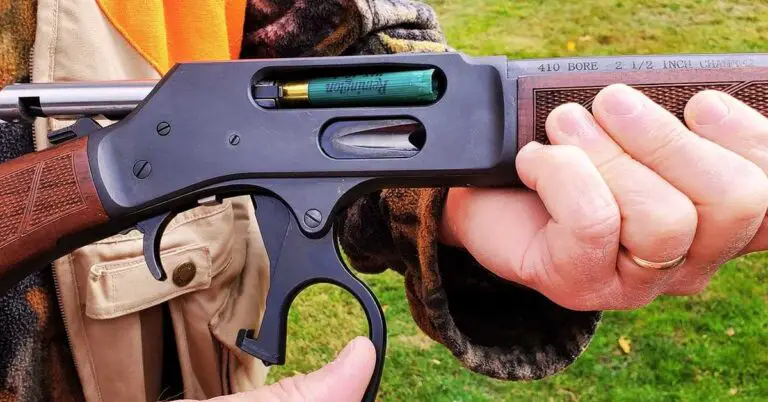As you settle into your couch, you might think you're far from becoming a skilled survivalist. But, what if you could acquire essential wilderness survival skills from the comfort of your own home? With online learning platforms, you can tap into expert instruction on shelter building, fire starting, and food foraging – all at your own pace. You'll be surprised at how quickly you can develop the skills and confidence to face any survival situation. But, which skills should you prioritize, and how will you know when you're truly prepared?
Summary
- Online learning platforms connect users with experienced wilderness instructors to learn essential survival skills from home.
- Disaster preparedness planning involves making an emergency contact list and creating a home safety checklist to identify potential hazards.
- Shelter building fundamentals, such as finding a suitable location and gathering materials, can be learned without venturing into the wilderness.
- Water purification methods, like boiling, UV light purification, and distillation, can be learned and practiced at home to ensure safe drinking water.
- Fire starting techniques, such as flint knapping and battery ignition, can be mastered at home to provide warmth, light, and a way to cook food.
Online Wilderness Survival Courses

As you venture into the world of wilderness survival, you're probably thinking, "Why bother with online courses?
Can't I just learn from a grizzled mountain man in the woods?" But let's be real, finding a wilderness instructor who's willing to teach you the ways of the wild can be tough.
That's where online learning platforms come in. They connect you with experienced wilderness instructors who'll teach you essential survival skills from the comfort of your own home.
You'll learn how to start a fire, build a shelter, and find food in the wild – all without having to sacrifice your Netflix subscription.
Plus, online courses let you learn at your own pace, so you can focus on the skills that matter most to you.
Basic First Aid Training

You're probably thinking, "I'm not a doctor, what do I do if someone gets hurt?"
Well, that's where basic first aid training comes in – you'll learn wound care essentials, like how to clean and dress wounds, and CPR fundamentals, so you can keep someone alive until help arrives.
With these skills, you'll be the hero who keeps your friends and family safe in an emergency.
Wound Care Essentials
Your skin is your body's first line of defense, and when it gets breached, all hell can break loose – literally.
That's why knowing wound care essentials is vital for survival. You don't need to be a medic to learn basic wound cleaning methods.
For minor wounds, clean water and mild soap will do the trick. For deeper cuts, use sterile gauze and saline solution.
Infection prevention strategies are just as important. Apply antibiotic ointment and cover the wound with a bandage to keep bacteria out.
CPR Fundamentals
A cardiac emergency can strike at any moment, and when it does, every second counts.
You're probably thinking, "What if I'm not a doctor?" Relax, you don't need a medical degree to save a life.
Learning CPR fundamentals from your couch is easier than you think. Start with Heart Health basics: a cardiac arrest occurs when the heart stops beating.
Your goal is to keep oxygen flowing until help arrives. That's where Rescue Breathing comes in.
This technique involves giving 30 chest compressions followed by two breaths. Repeat until help arrives or the person starts showing signs of regaining consciousness.
Trust us, it's worth the couch-time investment – you never know when you'll need to save a life!
Disaster Preparedness Planning

You're probably thinking, "Disaster preparedness planning" sounds like a real snooze-fest, but trust us, it's about being prepared.
Start by making an emergency contact list, so you can quickly get in touch with loved ones if disaster strikes.
Next, do a home safety checklist to identify potential hazards, and finally, map out an evacuation route plan, just in case you need to make a quick exit.
Emergency Contact List
Picture a sticky note on your fridge, a dog-eared page in your planner, or a contact in your phone labeled "ICE" (In Case of Emergency) – it's your emergency contact list, the unsung hero of disaster preparedness planning.
This list is more than just a bunch of phone numbers; it's a lifeline to your loved ones in case of an emergency.
Make sure to include contact alerts for your family members, so they can receive critical updates in real-time.
Keep your list updated with current phone numbers, email addresses, and social media handles.
Set reminders to review and revise your list regularly, so you can rest assured that your family is just a call away.
With a solid emergency contact list, you'll be ready to face any disaster that comes your way.
Home Safety Checklist
Twenty critical minutes – that's how long you've got to get out of your house safely in case of a fire.
Don't gamble with your life; make sure you're prepared. Start by checking your smoke detectors. Are they working? Are they expired? You should have one on every level of your home and inside each bedroom.
Next, locate your fire extinguishers. Do you know how to use them? Are they easily accessible? Make sure you have the right type for electrical, grease, or wood fires.
Don't assume you'll never need them – take control of your home's safety. Take a few minutes to review your home's escape plan and identify potential hazards. Your life is worth the effort.
Evacuation Route Planning
Frequently, when disaster strikes, the difference between life and death comes down to having a solid evacuation route plan in place.
You're probably thinking, "Why do I need a plan? I know my neighborhood like the back of my hand!"
But trust us, in a high-stress situation, you'll want to have a clear route mapped out to get you and your loved ones to safety quickly.
Start by analyzing your neighborhood to identify potential escape routes, noting any obstacles like rivers, highways, or construction zones.
Then, identify at least two routes to a safe location, like a friend's house or a community center.
Don't forget to designate a meeting spot in case you get separated.
With a solid evacuation route plan, you'll be ready to roll when disaster strikes.
Shelter Building Fundamentals

As you venture into the great outdoors, having a solid understanding of shelter building fundamentals can be a lifesaver – and we're not being dramatic, it's just that hypothermia is no joke.
You don't need to be a seasoned outdoorsman to whip up a decent tarp shelter. Start by finding a suitable location, like a group of trees or a natural ridge, to provide some natural protection from the elements.
Next, gather some sturdy branches and some rope to create a simple frame. Throw that tarp over it, and you've got yourself a primitive but effective lodging.
Don't worry if it's not the Ritz – it's better than sleeping under the stars with no protection at all!
Water Purification Methods

You're probably thirsty from building that shelter, so now it's time to get your drink on – safely, that is!
You'll need to purify that questionable water before guzzling it down, and lucky for you, there are some tried-and-true methods to get the job done.
Let's get started with the most popular ones: boiling water, zapping it with UV light, and distilling it like a pro!
Boiling Water Method
Waterborne pathogens are sneaky little critters, just waiting to ruin your outdoor adventure.
But don't let them win! You can outsmart them with the boiling water method, a simple yet effective way to purify water.
It's a no-brainer: bring the water to a rolling boil for at least one minute, and you'll kill 99.9% of waterborne pathogens. No fancy equipment needed, just a pot and a heat source.
And, yes, it's that easy. If you don't have a stovetop, don't worry – there are stovetop alternatives, like camping stoves or solar ovens, that'll get the job done.
UV Light Purification
Boiling water might be your go-to method for purification, but what if you're in a pinch and don't have access to heat?
That's where UV light purification comes in – a sweet alternative that's easy to use and doesn't require any flames. The UV advantages are clear: it's lightweight, energy-efficient, and can kill 99.9% of bacteria and viruses.
Just expose your water to the UV light for a few minutes, and voilà! You've got safe drinking water.
However, there are some Light limitations to keep in mind. UV light only works on clear water, so if your water is cloudy or murky, you'll need to filter it first.
Additionally, UV light doesn't remove chemicals or heavy metals, so you'll need to use it in conjunction with other methods for thorough purification.
Distillation Techniques
When disaster strikes and your tap runs dry, distillation techniques can be a lifesaver – or rather, a thirst-quencher.
You can purify water using solar stills, which work by evaporating the water and then collecting the condensed steam. It's like a mini-desalination plant on your couch!
Another method is the Transpiration method, where you place a container in a plant's roots, and as the plant absorbs water, you collect the purified water that's released through its leaves. It's like having your own personal water filter.
With distillation techniques, you'll never be stuck without a drink again. So, take a deep breath, grab a cup, and get ready to quench your thirst in style!
Fire Starting Techniques

Mastering fire starting techniques is a crucial survival skill that'll keep you warm, dry, and fed in the wilderness – and it's way more empowering than relying on a lighter that's running on fumes.
You're not just dependent on a piece of equipment; you're a self-sufficient boss who can conjure flames from thin air.
Try flint knapping, where you create sparks by striking a flint against steel. It's like magic, minus the magic wand.
Or, use battery ignition, where you generate a spark by touching both terminals to a piece of steel wool. It's like a mini lightning bolt in your hands.
With these skills, you'll never be left in the dark (or cold) again.
Navigation Using Maps

How far would you get without a map in the wilderness? You'd probably end up walking in circles, praying for a cell phone signal that never comes.
But fear not, couch potato! You can learn to navigate like a pro from the comfort of your living room.
Start by practicing map reading. Study the symbols, learn to identify landmarks, and understand how to use the scale to estimate distances.
Next, grab a compass (or a phone app) and learn how to use it in conjunction with your map. It's not rocket science, but it does take some practice.
With a little patience, you'll be able to find your way out of the woods and back to civilization in no time.
Self Defense Strategies

Your survival depends on more than just finding your way out of the woods – it also relies on your ability to protect yourself from the dangers that lurk within.
When it comes to self-defense, you're not just fighting off bears and snakes, you're also defending against human threats in urban escapes.
That's why establishing personal boundaries is vital. You can't control others, but you can control how you react to them.
Practice assertive communication, set clear limits, and trust your instincts.
Remember, self-defense isn't just about physical fighting; it's about being aware of your surroundings and taking proactive steps to stay safe.
Food Procurement Techniques

As you've fortified your personal boundaries, it's time to focus on fueling your body for the journey ahead.
Food procurement techniques are vital for survival, and you can learn them from the comfort of your couch.
Start by familiarizing yourself with food foraging, which involves identifying and harvesting wild edibles.
From dandelion greens to wild berries, there are plenty of nutritious options available.
Research the varieties that grow in your area and learn how to identify them safely.
You can even practice foraging in your own backyard or neighborhood park.
Remember, a little knowledge can go a long way in keeping your belly full and your energy up.
Signaling for Help

When you're lost in the wilderness, signaling for help becomes a top priority.
You're not just waving your arms like a crazy person (although, let's be real, you might do that too). No, no, you're getting strategic.
You're creating smoke signals during the day, using wet leaves or green branches to create a thick, black smoke that's visible from afar.
And when the sun's out, you're flashing your mirror (or shiny object of choice) towards any potential rescuers.
Remember, three short flashes, pause, three short flashes – that's the international distress signal.
Don't worry if you feel silly; it's better to look silly and get rescued than to stay lost and look, well, lost.
Weather Forecasting Basics

Two essential tools in your wilderness survival kit are a solid understanding of signaling for help and the ability to forecast the weather.
Now, let's plunge into the latter. You don't need a fancy weather app to predict what's coming – just observe the skies.
Cloud recognition is key. Learn to identify cumulus, stratus, and cirrus clouds, and you'll know if a storm is brewing or if it's just a sunny day.
Atmospheric analysis is also vital. Pay attention to changes in temperature, humidity, and wind direction. These signs will give you an idea of what's heading your way.
Survival Mindset Development

You've got the skills to forecast the weather, but can you stay cool under pressure when the storm hits?
That's where survival mindset development comes in. It's time to toughen up, mentally speaking.
Mental toughness training is key to staying focused and composed in the face of adversity. Practice positive thinking strategies like reframing negative thoughts and visualization to boost your confidence.
Imagine yourself traversing a crisis with ease – it's powerful stuff! The more you train your mind, the more resilient you'll become.
Essential Gear Identification

How prepared are you to tackle the great outdoors with nothing but the clothes on your back? Not very, right?
That's where essential gear identification comes in. You don't need to be a seasoned adventurer to know that having the right tools can mean the difference between life and death.
Start by inspecting your gear – what do you already have that could be useful in a survival situation?
Then, think about customizing your kit to fit your specific needs. Do you need a water filter or a first aid kit?
Prioritize the essentials and you'll be well on your way to being prepared for anything. Remember, it's not about having the most gear, it's about having the right gear.
FAQs
Can I Learn Survival Skills if I'm Physically Disabled or Elderly?
Hey, you can still master survival skills even with physical limitations! Look for accessible training that caters to your needs, and learn adaptive techniques that work for you – you got this, and freedom's just a skill away!
How Long Does It Take to Become Proficient in Survival Skills?
You're wondering how long it takes to become a survival pro, huh? Well, let's get real – with daily practice and consistent training, you'll be whipping up shelter and starting fires like a boss in no time, probably within a few weeks to a few months!
Are Survival Skills Only Necessary for Wilderness Adventures?
You think survival skills are only for wilderness warriors? Think again! Urban myths aside, you're already using them in your daily habits – like traversing rush hour or dealing with a power outage; it's time to level up those skills for ultimate freedom!
Can I Use These Skills in Urban or Suburban Environments?
You're thinking, 'Survival skills are just for wilderness weirdos, right?' Nope! You can totally use them in urban or suburban environments. You're mastering urban adaptability and suburban preparedness, and that's some next-level freedom, my friend – you're ready for anything, anywhere!
Do I Need to Be an Outdoorsy Person to Learn Survival Skills?
You don't need to be a rugged outdoorsy type to learn survival skills – as an urban dweller, you can adapt them to your city mindset, and who knows, you might just find your inner MacGyver thriving in the concrete jungle!
Conclusion
You've made it to the end of this wilderness survival crash course – and you didn't even have to leave your couch! Now, you've got the skills to stay safe in the great outdoors. Remember, survival isn't just about knowing what to do, it's about being prepared and staying calm under pressure. So, go ahead, grab your backpack, and get out there – Mother Nature's waiting!




